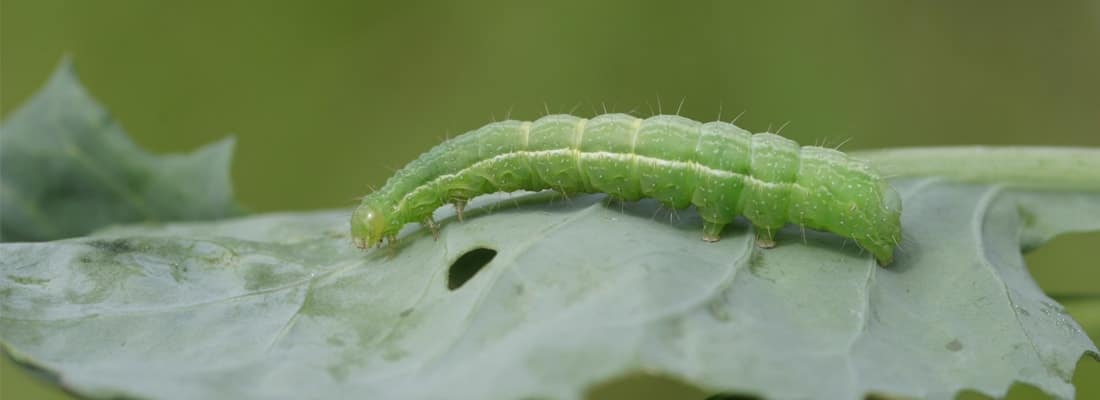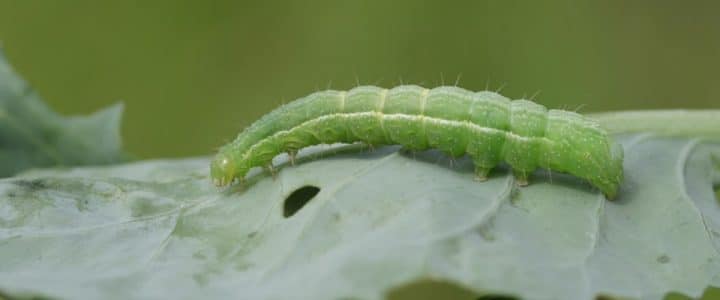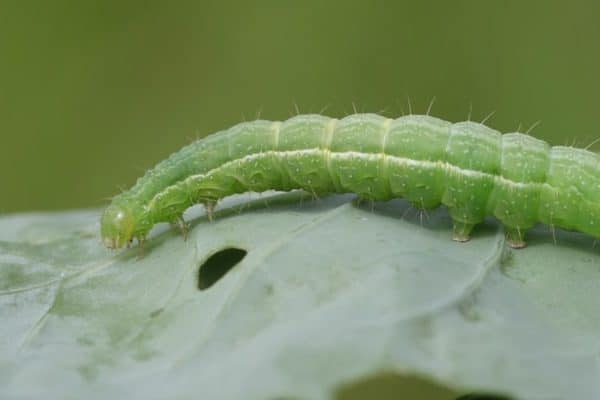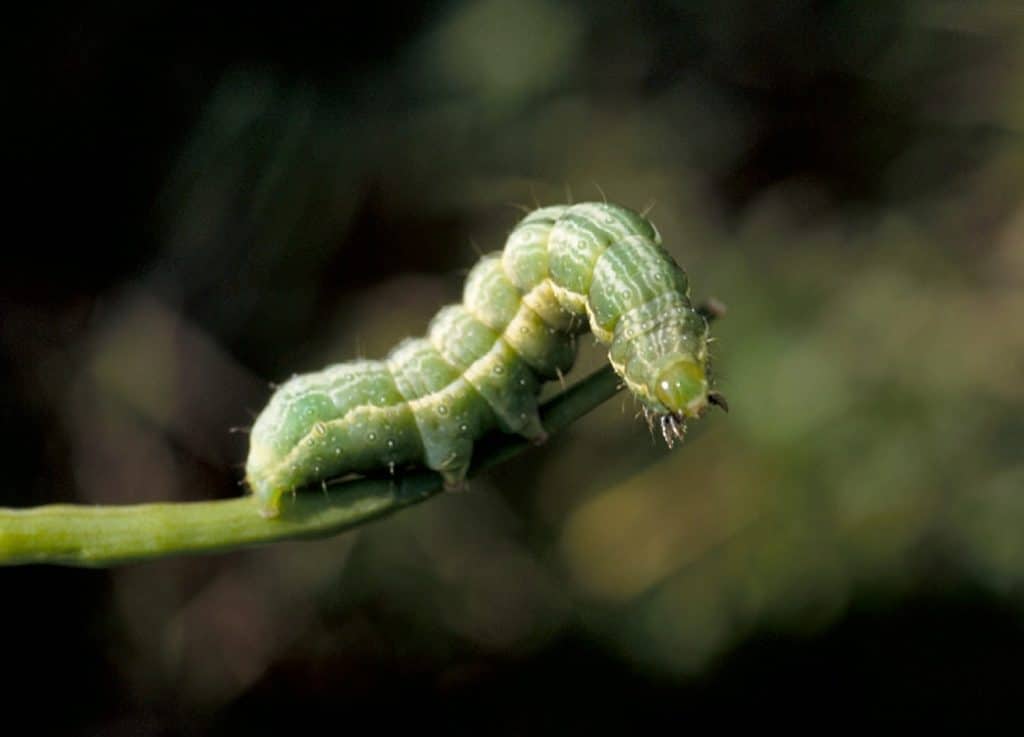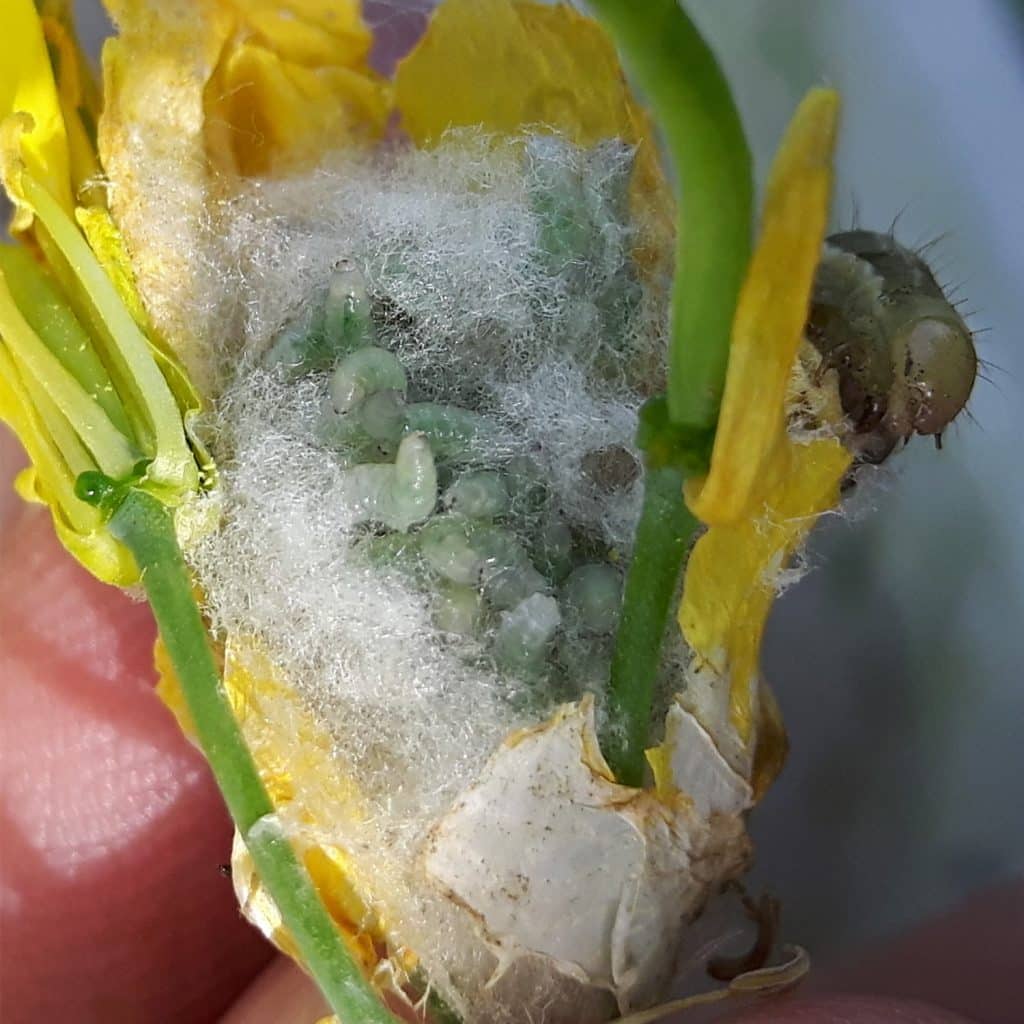The alfalfa looper (Autographia californica) adult moth stage looks much different from its larvae stage, which is often confused with other loopers and other green larvae. As with other insects, proper identification of the species as well as the timing and type of damage it causes is an important part of understanding and managing this potential canola pest. Management considerations include:
- Scouting crops for the larval stage from mid-June to mid-July, when they are most likely to cause the most damage.
- Correctly identify larvae by their light green or olive colour with two light stripes down each side of their body and two light stripes along their back.
- There is no economic thresholdAn economic threshold is the level of infestation (ex. pest insect density) at which lost yield (ex. due to feeding/insect pest damage) exceeds the cost of the chemical and its application. More for canola, so delay insecticide application considerations as long as possible (which can potentially allow viral diseases to reduce populations.
Identification and life cycle
There are usually two overlapping generations of alfalfa looper in one growing season. The alfalfa looper adult, like the diamondback moth, is blown in from the United States, although some may overwinter in Western Canada as pupae in the soil.
The adult moth stage of the alfalfa looper has grey forewings with a distinct, yellow sickle-shaped spot near the middle of each wing, while the body and hind wings are dull grey or brown. These moths appear all summer long due to overlapping generations. They feed on flower nectar at dusk and fly during daylight hours. Adults lay up to 150 to 200 yellow, hemispherical eggs, singly or in small groups on host plants prior to bloom, often near floral parts if present.
Larvae hatch (from eggs) in about a week and climb to the flowers and cut them off. As a result, patches of fields that showed bloom suddenly do not have any flowers. After four weeks of feeding, the larvae are mature and are about 25 millimetres (one inch) long. They are light green to olive green in colour, with a paler head, a light stripe down each side, and two light stripes along the back. The mature larvae appear to have a swollen abdomen. Mature larvae attach to plants and spin cocoons in which to pupate 1.
Damage
Infestations are uncommon. Damage is characterized by defoliation and clipping of flowers and small pods. Canola plants can recover from light damage. Alfalfa looper larvae are very susceptible to virus diseases 2 that frequently and rapidly destroy populations of late-instar larvae. Unfortunately, in some cases, feeding damage is usually done before viral control can be effective.
Monitoring
Scout the field for larvae at the start of flowering (mid-June to mid-July). Look for characteristic clipping of flowers.
Economic thresholds
There is no economic thresholdAn economic threshold is the level of infestation (ex. pest insect density) at which lost yield (ex. due to feeding/insect pest damage) exceeds the cost of the chemical and its application. More for alfalfa looper. However, bertha armyworm threshold levels may be used as a guide 3.
Management
If an infestation occurs, assess the damage and delay spraying an insecticide as long as possible to allow diseases and parasitoids such as the Cotesia vanessae wasp an opportunity to control the pest. Check provincial crop protection guides and insecticide labels for registered insecticides.
- Alberta Crop Protection Guide (The Blue Book)
- Saskatchewan Guide to Crop Protection
- Manitoba Guide to Field Crop Protection
Only chlorpyrifos products (Lorsban NT/Pyrinex/Nufos/Warhawk 480 EC/Sharphos) include alfalfa looper as one of the insects controlled in canola on its label (according to The Blue Book). Use of existing on farm stocks of chlorpyrifos is permitted for this use until December 2023.
Footnotes
- Philip, H. and Mengersen, E. 1989. Insect Pests of the Prairies. University of Alberta Press, Edmonton, AB. 122[↩]
- California Integrated Pest Management Program. 2013. UC Management Guidelines for Loopers on Tomatos. Agriculture and Natural Resources, University of California.[↩]
- John Gavloski. 2021. Western Committee on Crop Pests Guide to Integrated Control of Insect Pests of Crops – Insect Management In Oilseed Crops in Western Canada.[↩]
